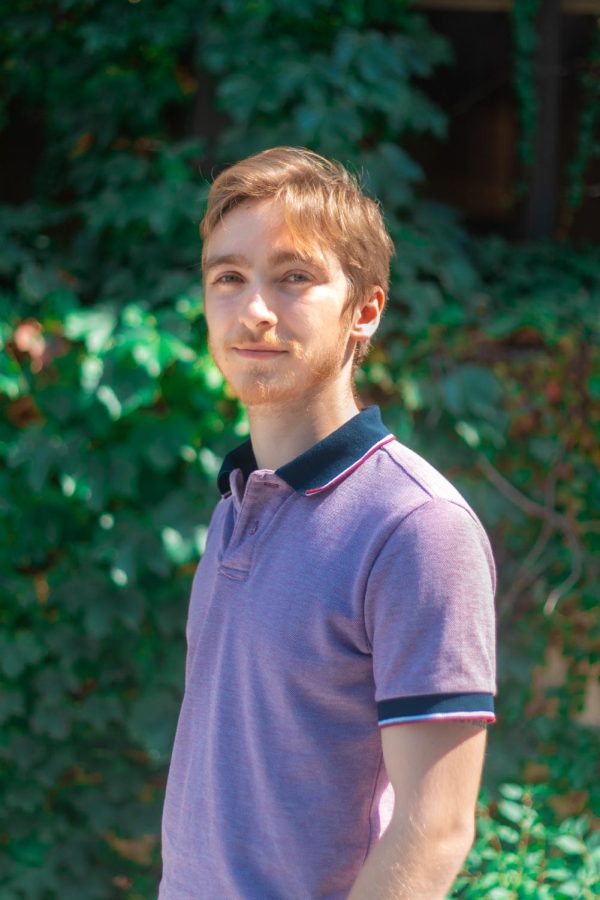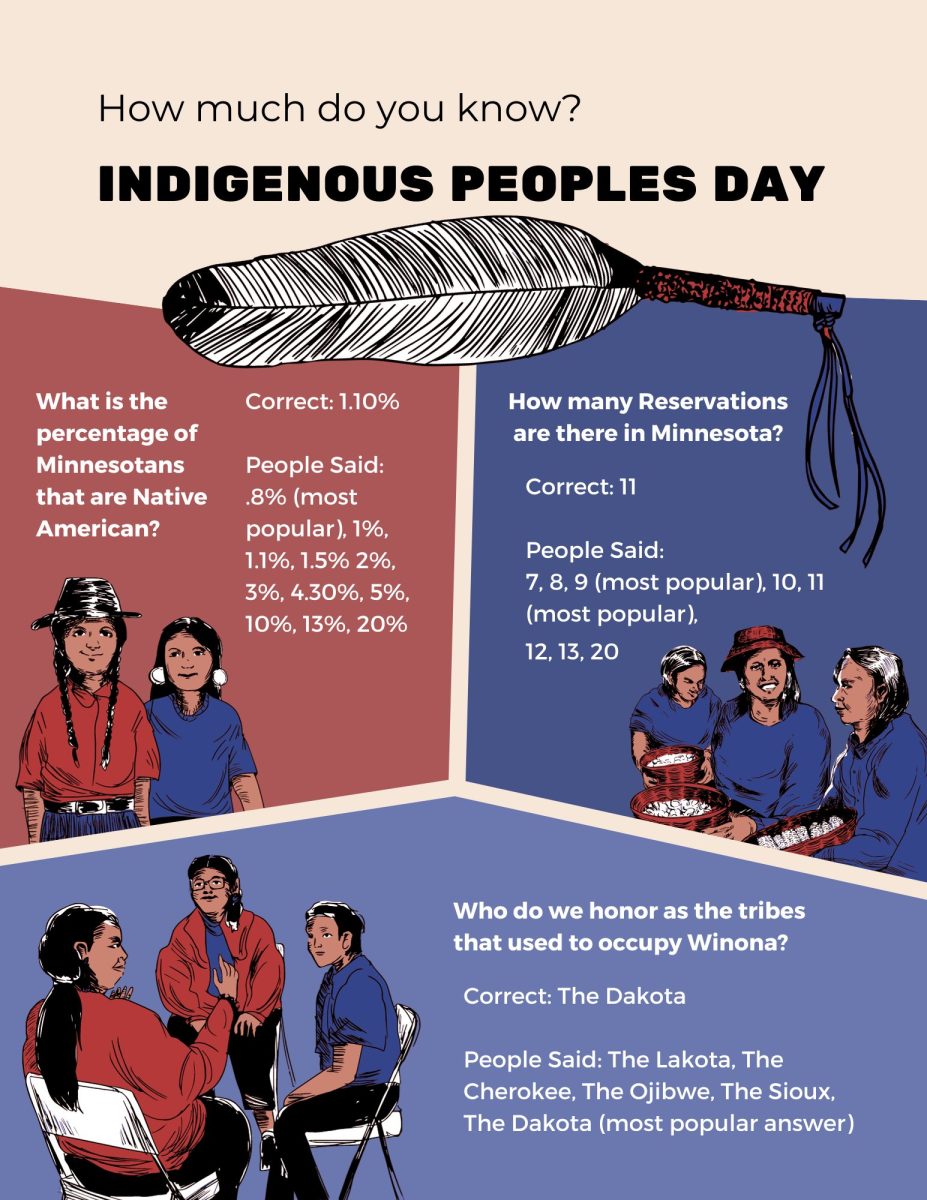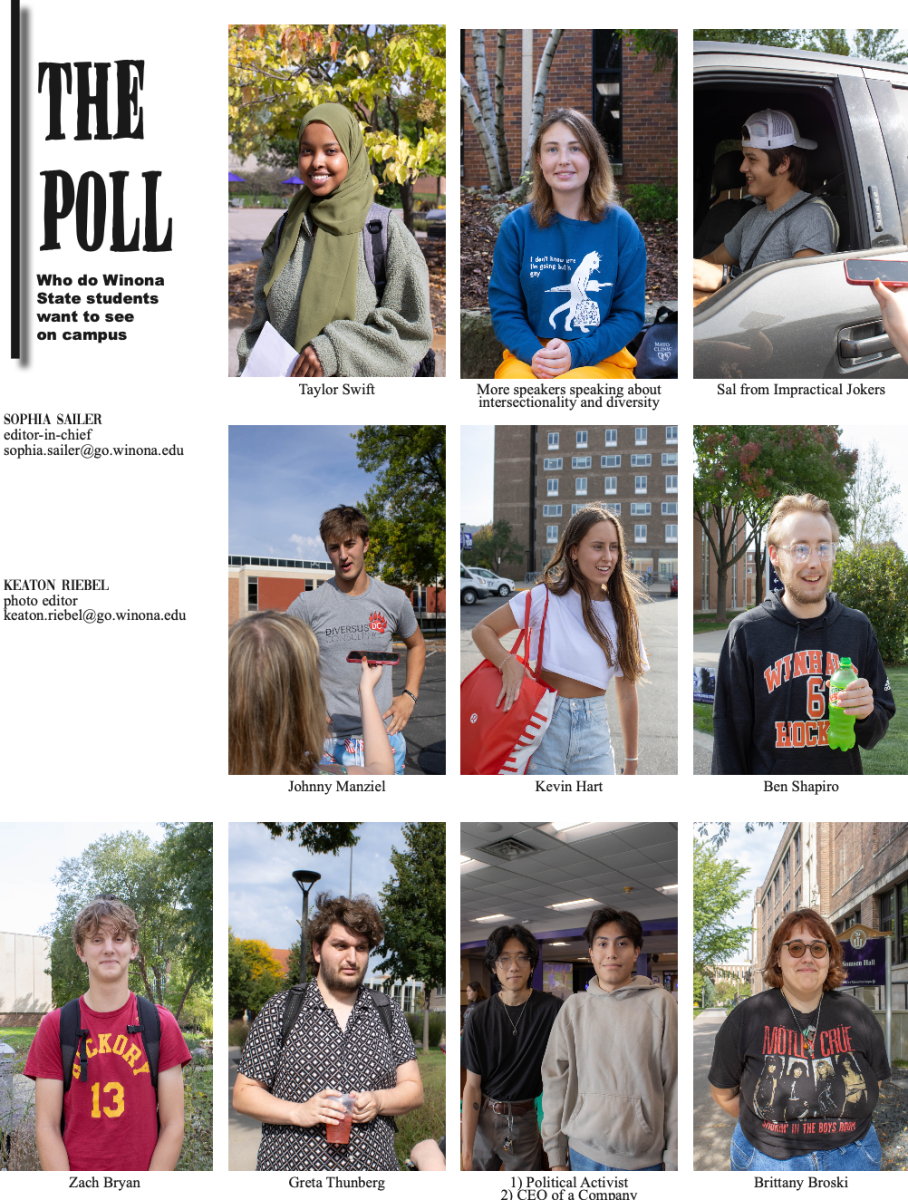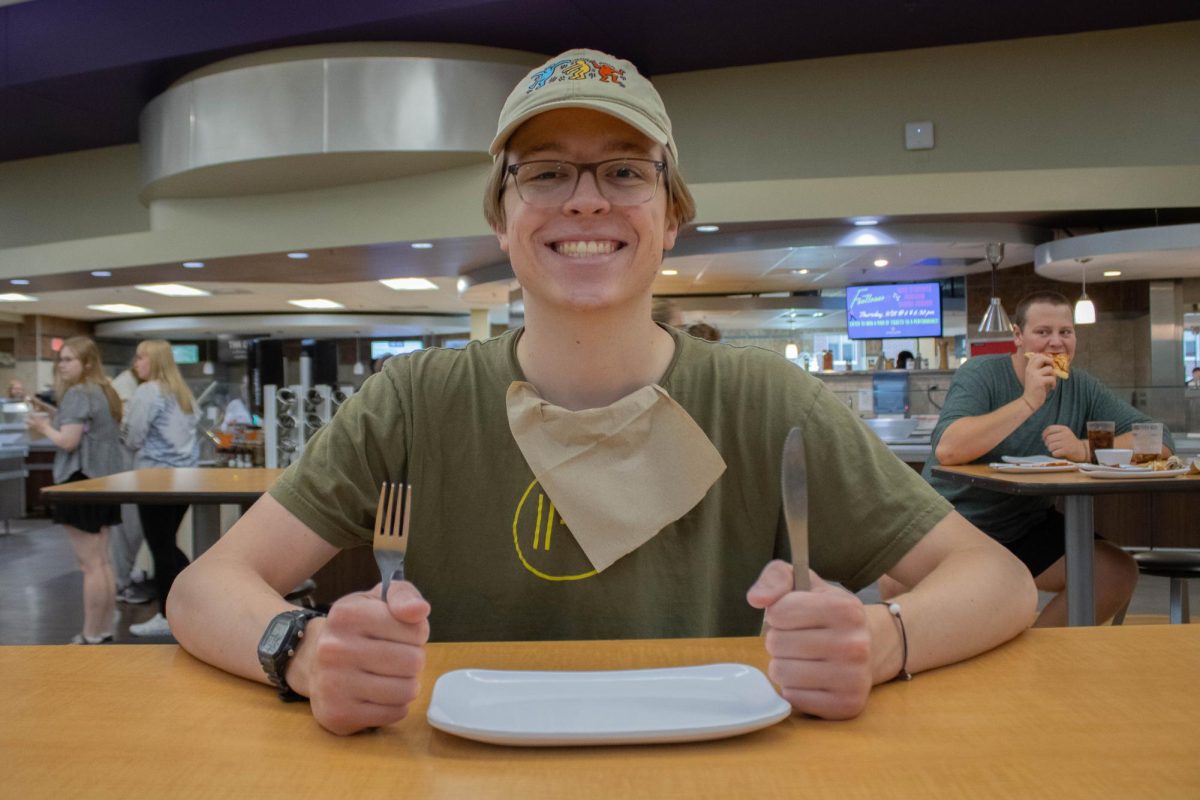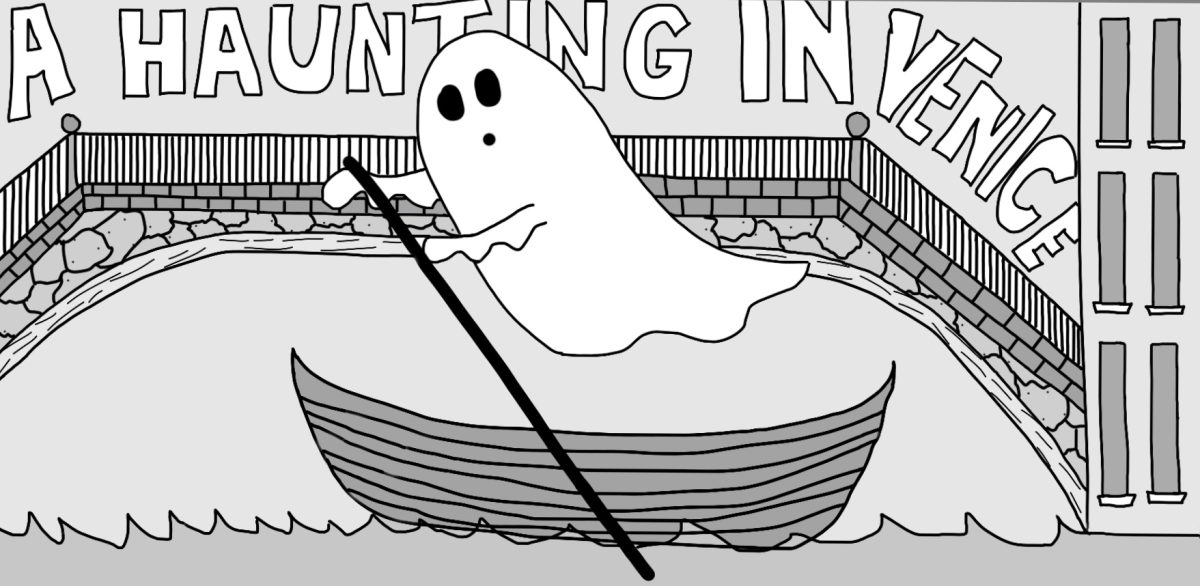I am saddened by the recent letter from the Turtle Island Student Organization that appeared in the Winonan, and I am disenchanted that the organization has chosen a strategy to “call out” the president and apply other tactics in public forums to disparage the president who has been working in good faith with TISO and other groups on campus to resolve the issues currently orbiting the proposed Indigenous Learning Garden.
As the person who initiated the Indigenous Learning Garden project, I want to clarify for the campus community some of the issues to which rumors have not been kind.
A brief history: during the 2006-2007, I was involved in a project in which I and others were visiting the Prairie Island community in order to mentor students and encourage them to attend college. The End of the Trail sculpture, which sits prominently in the middle of our campus, has denotations for many Native people. The sculpture is based on the sculptor’s experiences growing up in Dakota Territory. According to Shannon Vittoria, Andrew W. Mellon Curatorial Fellow at The American Wing of The Metropolitan Museum of Art in New York City, James Earle Fraser, the sculptor, wrote in his memoirs, “as a boy, I remembered an old Dakota trapper saying, ‘The Indians will someday be pushed into the Pacific Ocean.’” The artist later said that, “the idea occurred to me of making an Indian which represented his race reaching the end of the trail [my emphasis], at the edge of the Pacific.”
The sculpture for many Native people, me included, symbolizes the dominant culture’s hoped-for disappearance of Native people, a perspective that is encoded in the sculpture. It daily reminds Native people of our colonization and the continuing effects of that colonization. This sculpture, unfortunately, educates the public about Native history by representing us as conquered, defeated and no longer existing.
For these reasons, I approached the donor of the sculpture to request the sculpture be removed or, at the very least, moved to a less prominent location on campus. The donor refused but was willing to compromise and agreed to my proposal for an Indigenous Learning Garden that would incorporate the sculpture and provide a counter narrative to the sculpture so education could be advanced. I had no other choice but to include the sculpture in the plans for the garden.
The sculpture now is contentious, but for a much different reason. Some view the sculpture differently and want it to remain the focal point of the new proposal for an Indigenous Learning Garden.
I disagree with that perspective, and I have been working with a group dedicated to promoting decolonization throughout the campus that is creating a bigger picture, of which the Indigenous Learning Garden is just a portion. The group repeatedly has invited TISO representatives to participate in discussions; TISO has never acknowledged the invitations nor participated in discussions.
Circumstances have changed since my original proposal was approved by Faculty Senate and subsequently by the administration in 2007.
We now have an opportunity to confront institutional racism and inequities on our campus; President Olson is our ally – he is not the enemy – and he has been working in good faith to gather input from constituencies, not only TISO and the campus community but our indigenous neighbors. Yet the Indigenous Learning Garden has become the focal point for contention instead of being incorporated into a more organic approach to decolonization. I do not want to revise history; I want an indigenous perspective that counters the ideology of the dominant in order to educate and create more understanding from the perspective of the colonized.
Our group, along with other groups on campus, has hosted several Native elders the last two years; each of the elders has suggested moving the End of the Trail sculpture from the middle of campus including Ojibway elders Winona La Duke and Heid Erdrich, and artist Gabrielle Tateyuskaskan (Sisseton-Wahpeton Dakota). There are several groups involved in helping achieve the goal of decolonization on the WSU campus including the Assistant Curator of Native American Art at the Minneapolis Institute of Art, a Dakota elder, the Art Collections Committee, the Arboretum Committee and the president. Some of the shared goals are:
• Providing curricular and co-curricular resources on campus for the study of Indigenous peoples and cultures;
• Providing education on Indigenous peoples and cultures for the wider Winona community; and
• Demonstrating recognition of the Indigenous history of the land on which WSU sits, and respect for the Indigenous peoples whose homelands we now occupy.
To that end, the possibilities for achieving these goals include:
• Moving the End of the Trail sculpture to the library and displaying it alongside the Remington sculptures, which were created during the same time period, so all can be better contextualized for an educational experience; and
• Selling a portion of the Remingtons (the Arts Committee has submitted this recommendation), and use the proceeds to commission a piece of art by a Native person to incorporate into the Indigenous Learning Garden in order to highlight indigenous contributions to our campus, to the community, the state and the nation.
There are other projects being proposed, and I am happy to talk to anyone interested in knowing about them.
I appreciate the efforts TISO has made toward instituting Indigenous People’s Day. I have met with another group encouraging it to take before the Student Senate a statement
that recognizes and acknowledges that WSU is on Dakota land, and I suggested it be read before every public event on campus. Unfortunately, I have not heard about whether that proposal moved forward. If we are to work together toward decolonization, it requires all of us to advance efforts on different fronts so we create “holistic learning.”
Indeed, it has a been a long journey since I proposed the original Indigenous Learning Garden. I understand the disinterest in the project among the campus community in 2007 and the bureaucratic obstacles. I’m dismayed the project languished, and it’s disappointing that the project was not honored until a white male had an “epiphany” – an example, I believe, of how Native voices, especially women’s voices, don’t carry the same weight as voices from the dominant culture. With that being said, I appreciate all allies in our efforts to educate.
I believe we truly are at a point in time during which we can achieve the goal of decolonizing the WSU campus, and I want to see it done in a way that would make our ancestors proud.
I encourage TISO to work with others attempting to achieve our shared goals, and I trust President Olson and his cabinet will make the best decision regarding the Indigenous Learning Garden, guided by WSU principles.
Cindy Killion, Ph.D.
Mass Communication Department








































